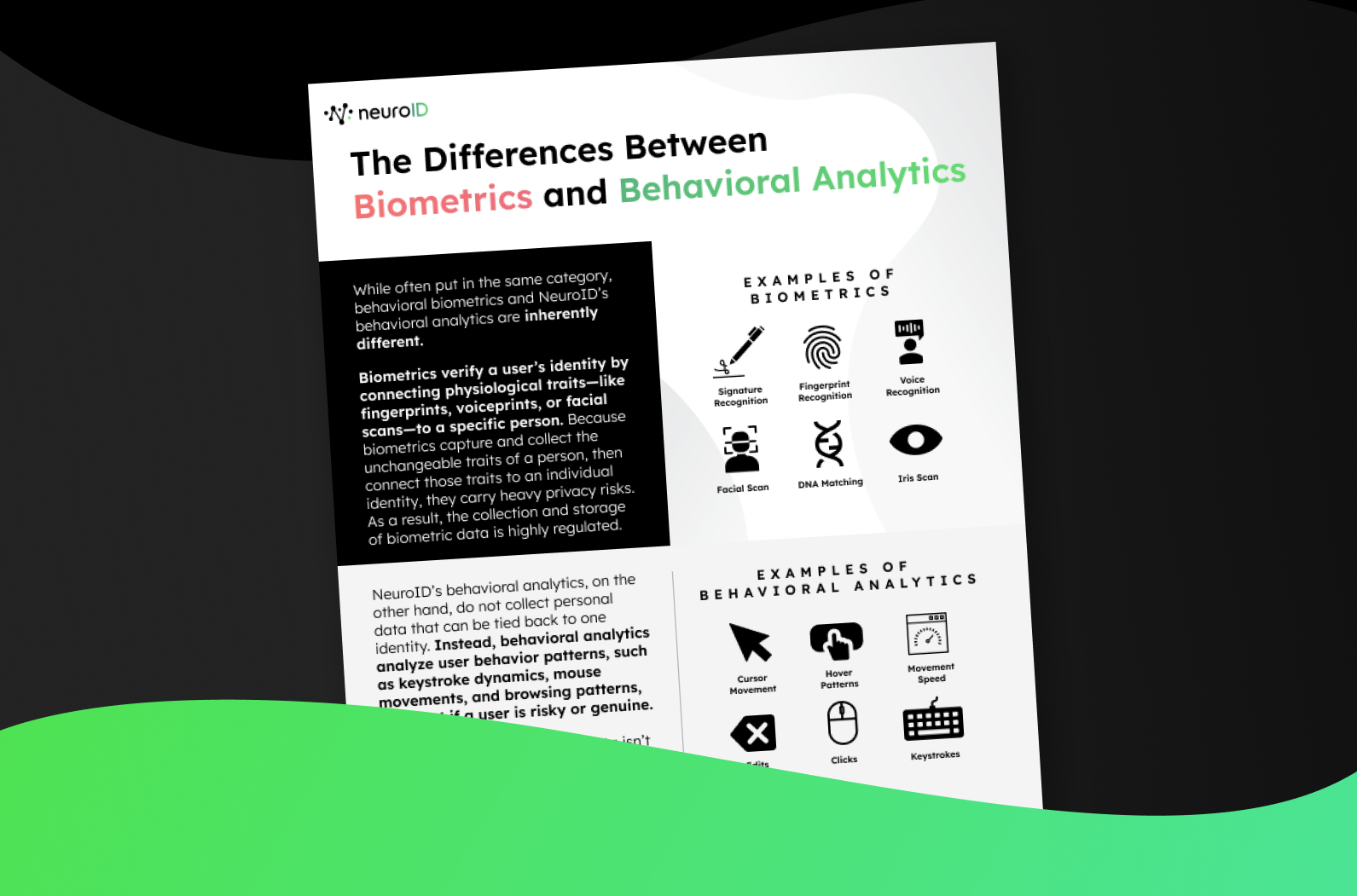
How Top-of-Funnel Behavioral Analytics Create Bottom-Line Value: Lessons from the Frontline of Application Fraud
Over a five-month span, NeuroID analyzed 150+ fraud attacks targeting 17 different customers. Through this, we collected in-depth data on how probing attacks, ambient fraud, and other evolving strategies are impacting our customers’ revenue growth and fraud vulnerability. We’re excited to share our research with you in a new series called The Crowd Goes Wild!, focused on the power of crowd-level applicant visualization.
With all the data we collected, we looked first at the deep impacts of application fraud. We started there because it’s where life-time customer value starts—and where it’s most vulnerable.
As the name suggests, application fraud happens at the application stage: the top-most point of your onboarding funnel where a prospect fills out forms or inputs the personal data needed to enter your ecosystem. It’s that crucial stage where a customer decides if they want to do business with you. And it’s also the best place to decide if you actually want that customer’s business. Are they a genuine prospect, likely to complete the application with the intention of becoming a revenue-generating customer? Or, are they a fraudster, perhaps testing your systems for vulnerabilities before starting a full scale attack? Our study tracked how our customers used our behavioral analytics to make decisions off of the answers to those questions and more, based on real-time visualization of crowd-activity on their site. We were especially curious to see how customers made decisions when their application quantity spiked.
Balancing Risk and Revenue at Onboarding
Marketing campaigns serve as a powerful driver in new applicants. But our data shows they are often joined by tag-along fraudsters. For example, one digital bank experienced a sudden, fast-paced uptick in applicants. NeuroID behavioral analytics told them this uptick was the result of a marketing campaign successfully attracting genuine users to their site. Fantastic! Their marketing spend is successfully driving new business and revenue-creation! Knowing this, the bank would be able to fast-track the genuine customers to reduce risk of abandonment, increase conversion, and ultimately make the most of their marketing spend, without any concern about letting the good in alongside the bad.
This bank then launched a second marketing campaign a month later and a second applicant spike followed—but NeuroID flagged this one as including a tag-along group of risky applicants, likely fraudsters intrigued by the same new marketing campaign that was bringing in genuine users. Without NeuroID, these fraudsters would have flown in under the radar. Or, perhaps even worse, the digital bank would have resorted to extreme measures to step-up ALL applicants. We’ve even seen customers who formerly had to temporarily shut down applications all together due to an extreme fraud blitz where they couldn’t differentiate the cybercriminals from the customers: a huge blow to their bottom-line.
With the backing of behavioral data, this bank was able to confidently treat their genuine users to a great customer experience, while pushing risky users to step-ups and other identity verification tools in order to suss them out. At the end of that influx, the bank had gotten a much larger ROI on their marketing spend, as they were able to improve onboarding for the genuine, revenue-driving customers and weed out those with fraudulent intent.
Short Spikes of Bad Behavior have a Big Impact
Within our study, we saw that about 74% of fraud attacks were surprisingly swift, lasting less than 33 hours. These short spikes of risky behavior represent different fraud strategies: it could be instances of ambient fraud, probing fraud, small-scale fraudulent activity from novices and first-person fraudsters, or more focused fraud ring attacks. While our report explores the types of attacks more in-depth, the takeaway is clear: Given that most attacks wrap up in roughly a day, real-time alert systems are of paramount importance. Keeping your automated fraud defenses updated with best practices and implementing a pre-review step for risky applicants can mitigate these attacks and help you from making dire decisions such as taking your full onboarding process offline—something we saw a few customers need to resort to before bringing behavioral analytics into their onboarding toolbox.
This is just a small look at the takeaways from our The Crowd Goes Wild! Series: Application Spikes use case snapshot. Download the full report to read more on the trends, takeaways, and top-of-funnel revenue insights from the frontline of fraud.



